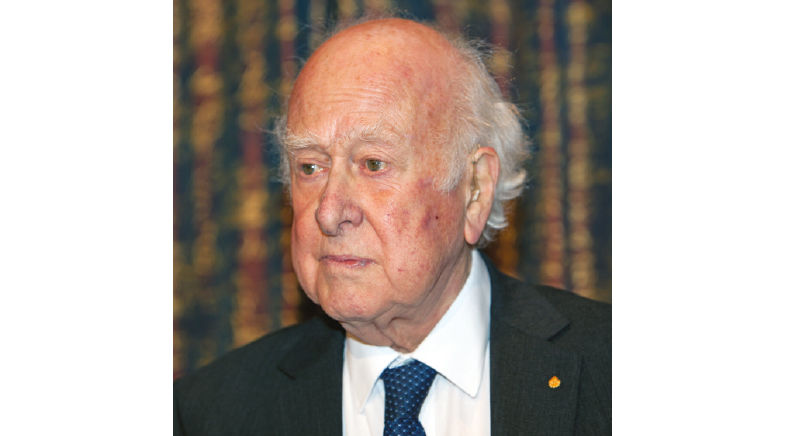The push and pull of life
-
- from Shaastra :: vol 02 issue 03 :: May - Jun 2023

A rollicking account of the manifestations of force in our daily lives, which helps us understand how the physical world works.
Every time I get off a flight, there's a curious phenomenon that ensues. I don't want to suggest it has something to do with me – apart from my willing participation – for I'm sure you've seen it happen too. Nearly all of us walk off the flight and through the terminal at top speed. I've never quite understood why I'm walking so fast, why I'm so focused on getting ahead and staying ahead of others, and why so many others seem similarly focused. Not that I've thought about it much, which might itself be a commentary.
It's as if we "who have been traveling for hours in a pressurized cabin at over five hundred miles per hour cannot get [our] bodies or minds to adjust to a normal walking pace. [We] want to move as fast as possible." Yes indeed, that's a quote from this book. Imagine my astonishment at recognising myself in its pages! Why would a book called Force so accurately describe something I do without thinking?
Yet that's the thing in this book. It's about force – that notion we learn about in elementary physics. But it's really about the presence and manifestations of force in our daily lives. Like on airport runs. What do those have to do with force, you ask? Well, I'll leave for you the pleasure of finding that out for yourself.
SPRING IS IN THE AIR
Elsewhere, I was reminded of something else in my life, this from my school-going days. My peers then were avid collectors of stamps and coins and who knows what else. Me, I collected springs. I still remember the small flat box in which I stuffed them: long, short, stiff, pliable... I'd spend long delicious moments compressing each one in turn, savouring the pushback each time, the way it grew stronger the more I compressed. The toughest was a small one made of fairly thick metal, no more than 4 or 5 coils long. The little spiral objects taught me something about force. I was too young then to fully appreciate exactly what, but I did start to recognise springiness elsewhere – not just in objects that formed spirals. One of the earliest I remember was a crude toy available from street vendors outside parks, for example. You pressed its metal tongue with your thumb and it would make a loud clicking sound as it snapped back and forth. It worked because the tongue invariably snapped back into position after being pushed forward. Just as a coiled spring would.

Unusual examples of springiness appear in this book as well. Henry Petroski introduces us to Hooke's Law, which refers to the "linear relationship between the extension of a spring and the force needed to stretch it that amount" – and of course Hooke's Law applies to compression as well. Soon after, Petroski notes that not all springs look like "the helix of wire" inside a ballpoint pen. Childproof caps on medicine bottles, for example. They contain inserts that "function as springs". You can feel their pushback as you press and turn the cap to open it. Hooke's Law again, where you might never have expected it.
'ROCKET SCIENCE'
Still, a ballpoint pen nicely illustrates the Law. As Petroski writes: "If in retracting the ballpoint we resist clicking the button quickly and hold our thumb on it to feel the force of the spring, we will sense it getting weaker as the spring gets longer." To that, I'd like to add the little game I'm always playing with these ballpens. Hold one upright on a table, button down, and press till the button is fully depressed. Let go and let the spring launch the pen like a tiny rocket. You'll find it rises substantially more if the pushback is while retracting the nib, as opposed to exposing it. Why?
Blame the force intrinsic to the spring's compression, and think how much compression happened in each case. F = ma, Petroski reminds us; force is mass multiplied by acceleration, the equation familiar to science and engineering students everywhere. So, a lesser force on the same mass produces less acceleration. Now you can explain your ballpoint rocket's respective launches.
Petroski sees force in everyday objects, including coils of spring, and regales us with their stories.
There's a lot else in this book. Part of its charm is in how Petroski riffs from science into utterly unexpected areas. Check his explanation for supermarket layouts, as pioneered by the founder of the Piggly Wiggly chain – including speculation on that name itself. But part of it is also in how Petroski sees force in every direction, and regales us with its particular story, every time.
Which is how he got me thinking about my little rocket game, and the way I rush from a flight. I'm not complaining, though I promise to be more leisurely after my next flight.
Once a computer scientist, Dilip D'Souza now writes on mathematics, among other things.
Have a
story idea?
Tell us.
Do you have a recent research paper or an idea for a science/technology-themed article that you'd like to tell us about?
GET IN TOUCH














